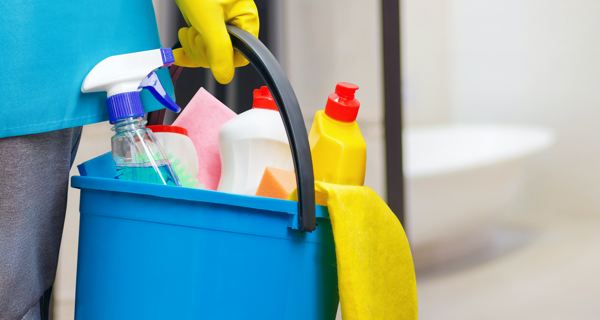How to Remove Mold From Shower Caulking
By Laura Parker
November 21, 2024

We’ve all been there before. You’ve given your bathroom a deep clean and scrubbed away at your shower and bath, but there are still stubborn mold stains that you just can’t seem to get rid of. They can leave your bathroom looking dingy even if everything else is spotless.
The good news is it’s not hard to instantly brighten up your shower by getting rid of the mold in your shower caulking. Want to know how? Our guide will walk you through the process step-by-step, and you’ll have your shower refreshed in no time.
Supplies to Remove Mold from Shower Caulking
Before you start attacking that mold, it’s important to make sure you have everything that’s required at the ready. It’s not a long list, and the odds are you probably already have everything you need right at home:
- Bleach
- Spray bottle
- Cotton balls
- Scrubbing sponge or toothbrush
- Broom or brush and dustpan
- Rubber gloves
Note: Depending on what strength of the product you want to use, vinegar, hydrogen peroxide, and ammonia are all possible alternatives for bleach. You can even make a paste out of baking soda and water and apply it to your caulking to help draw out the mold and sanitize it. We’ve picked bleach for our guide because it’s one of the most effective cleaners out there when it comes to mold and mildew.
How to Clean Shower Caulking
Now that you’ve got everything assembled, it’s time to get to work. Here’s what you’ll need to do:
- Sweep away at your shower floor and walls with your broom or brush to make sure there’s no dust or dirt that will get mixed with your cleaning solution.
- Put on your rubber gloves and make a bleach solution in your spray bottle out of 1 part bleach and 10 parts water.
- Spray the mold and mildew in your shower generously with the bleach solution, and let it sit for 5 to 10 minutes.
- Gently scrub at the mold stains in your caulking with your sponge or toothbrush. Really, any type of soft-bristle brush will work.
- If the mold stains are proving stubborn, you might need to soak them. Douse your cotton balls with your bleach solution, line them up along the caulking where you see stains, and allow them to stay there overnight.
- Rinse your shower out and make sure all of the chemicals have been washed away. Then, wipe the caulking with a wet cloth.
Your shower caulking should now be mold-free. Enjoy your sparkling new shower!
What Causes Mold in Shower Caulk and Tile Grout?
Mold loves to grow in places that are damp and dark, so it’s no surprise that it loves to grow in your shower. If you have building materials that are prone to mold, like grout, caulking, drywall — even your bathroom rug — it’s pretty likely mold is going to find a way to invade. Poor ventilation is also a common factor in mold growth.
Keeping your shower area as dry as possible by leaving the door open and running your bathroom fan after every shower can help prevent mold growth. Spraying your caulk and tile grout with a vinegar solution every week is also great for stopping mold from growing there in the first place.
Cleaning Mold from Shower Caulking: FAQs
Is black mold in the shower dangerous?
For the average person, mold in the shower isn’t likely to pose too many health risks, especially if you’re good about cleaning or disinfecting it. But if you’re sensitive or allergic to mold and have a serious buildup, it might be time to consider getting it professionally recaulked or grouted.
Is bleach or vinegar better to kill mold?
Vinegar is non-toxic and great for getting rid of mold, while bleach is a little stronger. The bottom line is both products are up to the task, and which you use depends on your personal taste. Just make sure that if you choose bleach that you dilute it significantly.